Porto, Transformed
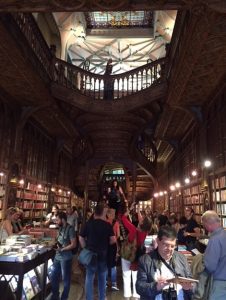
A crowded Livraria Lello, inspiration for Hogwarts in the Harry Potter series.
When Richard and I first visited Porto in 2012, it was in the middle of the country’s financial crisis. The downtown was crumbling and iconic department stores, as well as the bookstore that inspired J.K. Rowling’s depiction of Hogwarts, faced permanent shuttering. Having seen the implosion of downtowns in the United States as a result of the hollowing out of regional economies and the mushrooming of Walmarts and other discount big-box stores in the suburbs, I expected the same pattern. The next time we returned to Porto to visit our friends, we thought, the old downtown would be boarded up.
That didn’t happen. Over the next two years, discount airlines and travel sites touting the city’s low prices, great wine, historic architecture, weather, and scenery attracted first a trickle and then a flood of tourists from northern Europe, joining the British enthusiasts of the city’s signature port wine. In 2014, I wrote about the beginning of Porto’s tourist revival, and in 2015 I visited some of the newer attractions. I wrote then:
Whether the influx of hipsters is a temporary phenomenon or a sign of long-term change for Porto remains to be seen, as does its overall impact on the city’s residents.

Along with the Livraria Lello, visitors to Porto can see the Majestic Cafe where J.K. Rowling would write during her time in Porto.
Since then, we’ve returned every year. We’ve watched Lígia and Jorge’s family grow — their son now almost six years old and with an eight-month-old baby sister. We’ve brought friends and family to the city. My VCFA classmate Sandra and I took photos at Livraria Lello before the line to get in began to stretch a block long (despite an admission charge of now €6). Last weekend we met our son, daughter-in-law, and her family there.
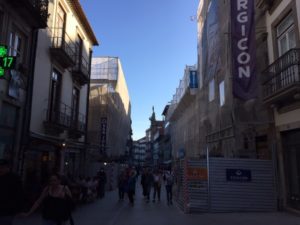
Construction along the Rua das Flores surrounds one of our favorite outdoor cafes.
Because we were with family, we stayed mainly in the downtown area, which has been totally transformed in the past seven years. The boarded-up buildings have been renovated, turned into restaurants, wine bars, shops, and hotels. There are several new downtown shopping malls, almost fully occupied, and a former factory is now an upscale dining space. The streets were crowded with pedestrians, and in the traditional shopping street of Santa Catarina, which was almost deserted with many closed stores during the crisis, locals and tourists carried shopping bags and rested in new outdoor cafes.
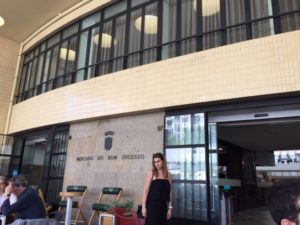
The revival of the Mercado do Bom Successo in a residential neighborhood shows Porto’s new prosperity.
Going several stops on the metro to meet our friends, we saw that the city’s revival has extended beyond downtown. The Rem Koolhas-designed Casa de Música has attracted visitors and anchored the Boavista neighborhood since its opening in 2005, but this neighborhood beyond the usual tourist haunts is thriving in new ways as well. Several years ago, the Mercado do Bom Successo opened in the space of a public market that dwindled and died around the time of the Crisis. Like the new generation of urban markets around the world, it sells prepared food along with stands with a variety of cuisines and ample and comfortable seating areas. My Lower East Side neighborhood in New York City has a similar market, the Essex Market, that has undergone a similar transformation from a Depression-era public market to serve a working-class community (substituting for the pushcarts that filled the streets around the turn of the twentieth century) to years of retrenchment that accompanied the city’s decline in the 1970s and 1980s, and has now moved into the newly-constructed Essex Crossing development with both food stores and restaurants. Along with the Bom Successo market, the Boavista neighborhood boasts a brand-new hotel geared to performers and spectators at the Casa de Música, with more construction in progress.
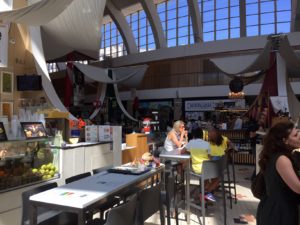
Interior of the Bom Successo market.
In the case of Porto, a rising tide of tourism has lifted all boats, turning Portugal’s historically poorer second city into a place with a growing job market (including high-tech jobs). The impact of this wave of visitors is far more visible than in Lisbon, in large part because Porto has a smaller population — around one million in the metropolitan area versus over three million in Lisbon — and the city itself is compact, both walkable and easily traveled by a modern and efficient metro system. As in Lisbon, one may travel directly downtown from the airport via metro, though Porto’s newer airport is further outside the city.
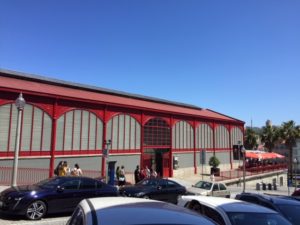
A new urban market near Porto’s waterfront.
Nowadays, visitors to Lisbon often see attractions outside the city limits, including Sintra and Cascais. In addition, the suburban towns on the way to Cascais, notably Oeiras and Carcavelos, have become centers of Portugal’s thriving tech and graphic arts industries. Visitors to Porto seeking day trips outside the city have alternatives as well: the wineries of the Douro Valley, the castles in Guimarães where the nation of Portugal began in the early Middle Ages, and the town of Aveiro, with its canals and famous fish market (unfortunately closed on Monday, as my family members found out yesterday). Both Aveiro and Guimarães are reachable via the suburban train system, making them a convenient and inexpensive trip.
My daughter-in-law’s mother spent much of her time taking photos of the old, restored buildings of downtown Porto, and I plan to feature her work in a future post. I’m thrilled that they all found Porto worth the trip, enjoyed their side trips to the Douro wineries and Aveiro, and hope to return, like us, in future years to see more of the changes.
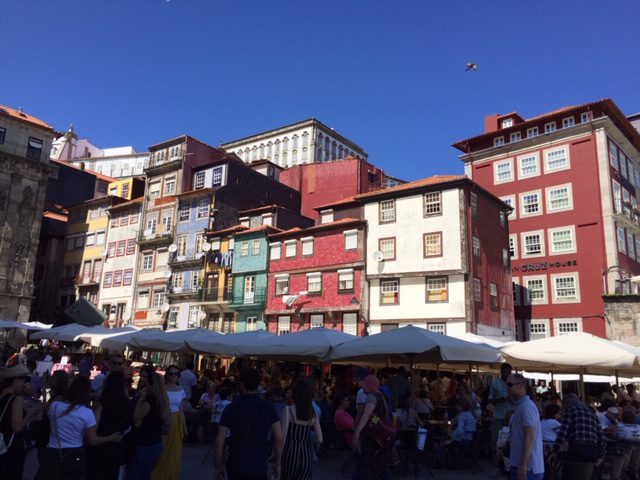
Restored buildings in downtown Porto.

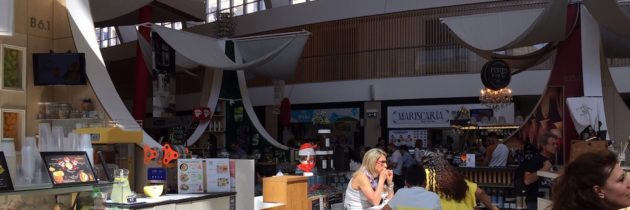





I didn’t know the connection to J. K. Rowling. How lovely, Lyn! And how wonderful that Sandra and you visited together.
J.K. Rowling worked as an English teacher in Porto in the years before writing Harry Potter, though she’d begun working on the series there. She married a Portuguese man and they had a daughter together, but the marriage didn’t work out, and she ended up returning to the U.K. with her child. Many of the details in the novel were inspired by her time in Portugal, from the architectural details to the name of Salazar Slytherin, Salazar being Portugal’s dictator for 42 years.
I love Porto! I’m so glad to hear it’s thriving! I have such fond memories of our time together there.
Me too! And it’s good that we went to Livraria Lello when we did. The price to get in has doubled and the lines have quadrupled.